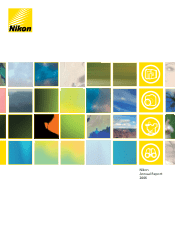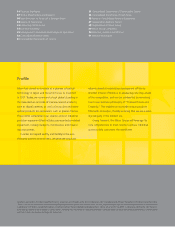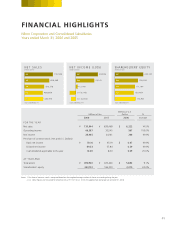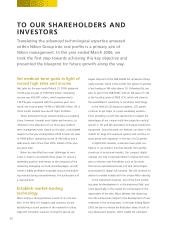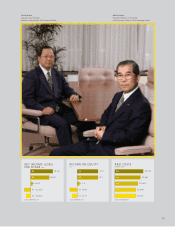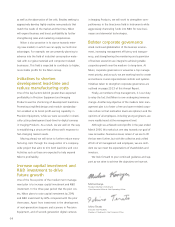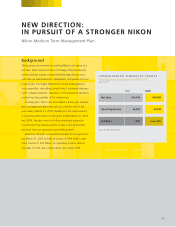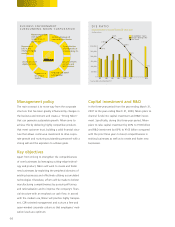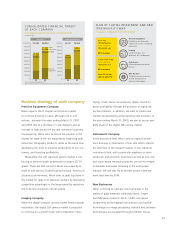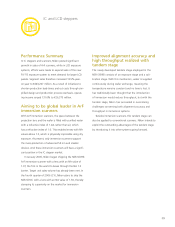Nikon 2006 Annual Report Download - page 11
Download and view the complete annual report
Please find page 11 of the 2006 Nikon annual report below. You can navigate through the pages in the report by either clicking on the pages listed below, or by using the keyword search tool below to find specific information within the annual report.
Performance Summary
In IC steppers and scanners, Nikon posted signifi cant
growth in sales of ArF scanners, while in LCD exposure
systems, efforts were made to expand sales of the new
FX-71S exposure system to meet demand for larger LCD
panels. Segment sales therefore increased 13.5% year-
on-year to ¥243,207 million. As a result of initiatives to
shorten production lead-times and cut costs through sim-
plifi ed design and production process overhauls, operat-
ing income surged 131.6% to ¥26,375 million.
Aiming to be global leader in ArF
immersion scanners
With ArF immersion scanners, the space between the
projection lens and the wafer is fi lled with purifi ed water
with a refractive index of 1.44, rather than air, which
has a refractive index of 1.0. This enables lenses with NA
values above 1.0, which is physically impossible using dry
exposure. At present, only immersion scanners support
the mass-production of advanced 55 nm and smaller
devices. And these immersion scanners will have a signifi -
cant position in the IC stepper market.
In January 2006, Nikon began shipping the NSR-S609B
ArF immersion scanner with a lens with an NA value of
1.07, the fi rst in the world to break through the NA 1.0
barrier. Target unit sales volume has already been met. In
the fourth quarter of 2006 (CY), Nikon plans to ship the
NSR-S610C with a lens with an NA value of 1.30, thereby
stamping its superiority on the market for immersion
scanners.
Improved alignment accuracy and
high throughput realized with
tandem stage
The newly developed tandem stage employed in the
NSR-S609B consists of an exposure stage and a cali-
bration stage. With this mechanism, water is supplied
continuously during wafer exchange, meaning the
temperature remains constant and no time is lost. It
has traditionally been thought that the introduction
of immersion would reduce throughput, but with the
tandem stage, Nikon has succeeded in overcoming
challenges concerning both alignment accuracy and
throughput in immersion systems.
Besides immersion scanners, this tandem stage can
also be applied to conventional scanners. Nikon intends to
exploit the outstanding advantages of the tandem stage
by introducing it into other systems going forward.
IC and LCD steppers
09

